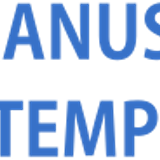Sensitivity Analysis Comparisson of Synthetic Polymer and Biopolymer using Reservoir Simulation
Abstract
With a simultaneous increasing demand for oil and large decreases worldwide in newly discovered oil reserves in the past few decades, much attention has been paid to more effi cient production approaches such as enhanced-oil-recovery (EOR) methods for developing oil and gas from existing reservoirs (Li et al., 2014). Basically, there are two types of polymers; biopolymers and synthetic polymers (Cenk et al., 2017). Method used for this study is reservoir simulation by Computer Modeling Group (CMG) STARS simulator. The study concerns to investigate and analyze the polymer sensitivity on two diff erent types of polymer: synthetic polymer and biopolymer. The simulation is done on 15x15x4 grid for 3653 days (10 years). The simulation indicates that the biopolymer injection shows more stable result in compare to synthetic polymer. The biopolymer’s adsorption occurs on smaller area and takes longer time. Conversely, the adsorption of synthetic polymer goes on bigger area of the reservoir and transpire on shorter time. Considering these facts, the use of biopolymers is more eff ective in order to increase the sweep effi ciency by reducing viscous fi ngering of chemical injection in reservoir.
Keywords
Full Text:
PDFReferences
Abdurrahman, M., 2017. Chemical enhanced oil recovery (EOR) activities in Indonesia: How it’s future, American Institute of Physics.
Abdurrahman, M., Permadi , A., Bae, W. & Masduki, A., 2017. EOR in Indonesia: Past, present, and future. International Journal of Oil, Gas and Coal Technology, 16(3), p. 250–270.
Agi, A., Junin, R., Gbonhinbor, J. & Onyekonwu, M., 2018. Natural polymer fl ow behaviour in porous media for enhanced oil recovery applications: a review. Journal of Petroleum Exploration and Production Technology, Volume 8, p. 1349–1362.
Al-Shakry, B., Shiran, B., Skauge, . T. & Skauge, A., 2018. Enhanced oil recovery by polymer fl ooding: Optimizing polymer injectivity. Saudi Arabia, Society of Petroleum Engineers.
Cenk, T., Dike, P., Henny, A. & Raul , M., 2017. Economic Comparison of Hydrocarbon Recovery under Injection of Diff erent Polymers, SPE/IATMI.
Dang, C. T. Q. et al., 2011. SPE 147872 Development of Isotherm Polymer/Surfactant Adsorption Models in Chemical Flooding: Society Petroleum Engineering.
Elhossary, D. A., Alameri, W. & Al-Shalabi, E. W., 2020. OTC-30680-MS Experimental Investigation of Biopolymer Rheology and Injectivity in Carbonates. Houston, Texas, USA, OTC.
Erfando, T., Rita, N. & Ramadhan, R., 2019. The Key Parameter Eff ect Analysis Of Polymer Flooding On Oil Recovery Using Reservoir Simulation. Journal of Geoscience, Engineering, Environment, and Technology, 4(1), p. 49.
Graham, G. M. & Frigo, D. M., 2019. SPE-193568-MS Production Chemistry Issues and Solutions Associated with Chemical EOR. Galveston, Texas, Society Petroleum Engineering.
Hidayat , W. & ALMolhem, N., 2019. Polymer flooding simulation modeling feasibility study: Understanding key aspects and design optimization. Manama, Bahrain, Society Petroleum Engineering.
Juárez, J. L. et al., 2020. Polymer Injection for EOR: Influence of Mobility Ratio and Slug Size on Final Oil Recovery. Virtual, Society Petroleum Engineering.
Li, K. et al., 2013. Novel Method for Characterizing Single-Phase Polymer Flooding. SPE Journal, 19(04), p. 695–702.
Manichand, R. N. & Seright, R. S., 2014. Field vs Laboratory Polymer Retention Values for a Polymer Flood in the Tambaredjo Field. Tulsa, Oklahoma, Society Petroleum Engineering.
Ministry of Energy and Mineral Resources (ESDM), 2018. Handbook Of Energy & Economic Statistics Of Indonesia 2018. Final ed. Jakarta: Ministry of Energy and Mineral Resources (ESDM).
Ogunberu, A. & Asghari, K., 2005. Water Permeability Reduction Under Flow-Induced Polymer Adsorption. Journal of Canadian Petroleum Technology, 44(11), pp. 1-11.
Rita, N., 2012. Studi Mekanisme Injeksi Surfaktan-Polimer pada Reservoir Berlapis Lapangan NR Menggunakan Simulasi Reservoir. Jurnal of Earth Energy Engineering, 1(1), p. 22–36.
SKK Migas, 2017. Special Task Force for Upstream Oil and Gas Business Activities Republic of Indonesia (SKK Migas) 2017, Jakarta: SKK Migas.
Smalley, P. C. et al., 2018. SPE-190230-MS Screening for EOR and Estimating Potential Incremental Oil Recovery on the Norwegian Continental Shelf. Tulsa, Oklahoma, Society of Petroleum Engineering.
Temizel, C. et al., 2016. SPE-184079-MS Production Optimization under Injection of Biopolymer, Synthetic Polymer and Gels in a Heterogeneous Reservoir EOR Techniques Surfactant Flooding. Canton, Ohio, Society of Petroleum Engineering.
Wang, D., Seright, R., Shao, Z. & Wang, J., 2008. Key aspects of project design for polymer flooding at the Daqing Oil Field. SPE Reservoir Evaluation & Engineering, 11(6), pp. 1117-1124.
Wang, D., Seright, R. S., Shao, Z. & Wang, J., 2007. Key aspects of project design for polymer flooding. Anaheim, California, Society of Petroleum Engineering.
DOI: https://doi.org/10.29017/SCOG.43.3.516

This work is licensed under a Creative Commons Attribution-NonCommercial-NoDerivatives 4.0 International License.






